| Designation: | Type 98 |
 |
|---|---|---|
| Manufacturer: | NORINCO - China North Industries Group Corporation - CNGC | |
| Product type: | Armoured Vehicles | |
| Name: | Main battle tank |
The Type 98 is the latest development of China’s main battle tanks (MBTs) and represents ain increase in firepower, mobility and protection. The tank was first revealed to the public in October 1999, and is reported to have entered service with the PLA in a small number for operational test and evaluation before the design is finalised. An improved variant Type 98G features new explosive reaction armour and Leopard 2 A6-style additional reinforcement to the turret frontal armour with externally mounted add-on armour modules.
The Type 98 is the latest derivative of the Type 90 main battle tank (MBT) family. It is also the officially certified version of China's third generation MBT programme, which had undergone development for fifteen years since the mid-1980s. It is understood that the development of the Chinese third generation MBT suffered certain technical difficulties in the early 1990s. The scheduled date of commissioning was postponed several times, until the initial approval certificate of the Type 98 was issued in 1998.
The Type 98 was first revealed to the public in the national day parade on 1 Oct 1999. A small number of the initial production model is in service with the Army for initial evaluations and tests. It is expected that the final production model of the Type 98 will join the service before 2004, depending on progress of the final modification work.
The original design target of the Chinese third generation MBT was as a counter to the Soviet T-72, but the changing requirements shifted the development towards a much more sophisticated machine. The later design criteria of the Type 98 was aiming at challenging the U.S. M1A1 Abrams, while certain aspects of the actually performance of the Type 98 is approaching the standard of the M1A2.
It is surprising that China has developed two MBTs, the Type 88C/96 and the Type 98, with similar performance at the same time. Although the Type 96 was regarded as the second generation MBT, while the Type 98 as the third generation MBT, they are comparable in term of general performance and technology. One possible explanation is that the Type 98 will be equipped by the most elite units in a relatively small number, while the Type 96, with less sophisticated technology and therefore cheaper unit price, will replace the bulk of Type 59/69 in current service.
The layout of the Type 98 is conventional, with certain influence by the Soviet tank designs. The driver's compartment is at the front, with fighting compartment/turret in the centre, and power pack in the rear. The complete powerpack assembly can be removed in around 30~40 minutes and in field conditions. Suspension is of the conventional torsion bar type and there are six rubber-tyred roadwheels on each side, the drive sprocket at the rear.
To accommodate more equipment and rounds, the Type 98's turret is slightly larger than that of the Type 90, which has resulted in a gap between turret and the hull in the front. This could be a major disadvantage in the battle as the whole turret might be blown off if the gap is hit.
In addition, the Type 98 also lacks designs often found on Western MBTs to minimise the damage in the event of penetration by a HEAT projectile. For example, the armour bulkheads to separate the crew compartment from the fuel tanks and rounds, as well as the top panels designed to blow outwards in case of explosion. This could lead to low survivability in modern combat field according to the experience of the 1991 Gulf War.
The main armament is a fully-stablised 125 mm 50-calibre smoothbore gun with autoloader. Despite the early reports indicating the gun was a licensed copy of the Russian 2A46, it is actually an indigenous design derived from the Chinese 120 mm smoothbore gun technology.
Ammunitions include armour piercing fin stabilised discarding sabot rounds (APFSDS), high explosive anti-tank rounds (HEAT), and high explosive fragmentation (HE-FRAG) projectiles. China has also reportedly manufactured Russian A-11 laser guided anti-tank missile (ATGM) to be fired by the 125 mm gun. In addition, the Chinese have also experimentally developed depleted uranium (DU) rounds for their tanks and it may be available to the Type 98.
Fire accuracy is attained by the laser rangefinder, wind sensor, ballistic computer, and thermal barrel sleeve. Dual axis stabilisation ensures effective firing on the move. The commander is has six periscopes and a stabilised panoramic sight. Both the commander and gunner have roof-mounted stabilised sights fitted with day/thermal channels, a laser rangefinder and an auto tracker facility. The commander has a display showing the gunner's thermal sight, enabling the commander to fire the main gun.
The Type 98 is also fitted with a compuerised onboard information processing system, which can collect information from vehicle navigation (Inertia/GPS), observation systems and sensors, process it in the computer and display it on the commander's display, giving the ability of real-time command and beyond-vision-range target engaging.
Secondary weapons include a 7.62 mm coaxial machine gun and a 12.7 mm air defence machine gun mounted on the commander's cupola. Each side of the turret has a 76 mm Type 84 five-barrel smoke grenade launchers.
The turret and hull are of all-welded steel armour construction. A layer of composite armour has been added to the front arc. The armour package is of modular design, enabling damaged sections to be replaced or upgrades installed throughout service life. Explosive reactive armour (ERA) can be fitted if required.
The Type 98 features an JD-3 integrated laser rangefinder/warning/self-defence device. Unlike contemporary Russian active tank self-defense systems like Drozd, Drozd-2, and Arena, which launch projectiles to disable or "shoot-down" incoming anti-tank missiles and projectiles, the Chinese system apparently uses a high-powered laser to directly attack the enemy weapon's optics and gunner.
The system includes what appears to be a laser warning receiver (LWR - the dome-shaped device on the turret roof behind the commander's position), that warns the crew that their tank is being illuminated by an enemy range-finding or weapon-guidance laser. The turret of the tank can then be traversed to face the direction of the enemy threat, and the laser self-defence weapon (LSDW - the box-shaped device on the turret roof behind the gunner's position), can be employed against the source of the enemy laser.
The procedure of the laser weapon would first use a low-powered beam to locate the optics of the enemy weapon. Once the enemy weapon was located, the power level of the laser would be immediately and dramatically increased. Such an attack would disable the guidance optics of the enemy weapon and/or damage the eyesight of the enemy gunner.
The available photos of the Type 98 have also confirmed that the laser weapon can be elevated to a higher angle than the tank's main gun, indicating that the engagement of attack helicopters is possible. In addition, the laser device could also be used for communications between friend tanks.
The Type 98 is powered by a liquid cooled, turbocharged 1,200 hp diesel derived from Germany WD396 diesel technology. At its current battle weight of 52 tons, this gives a power-to-weight ratio of about 23 hp/tonne.
|
||||||||||||||||||||||||||||
|
|||||||||
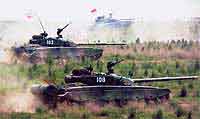 |
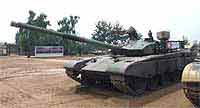 |
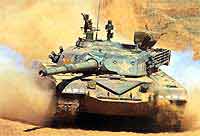 |
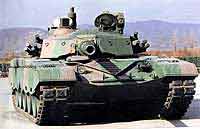 |
 |
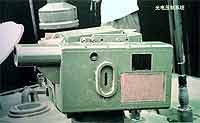 |
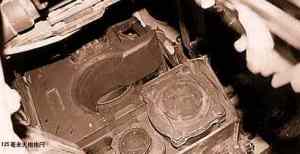 |
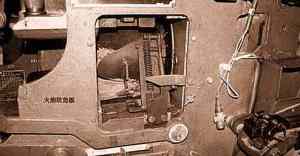 |
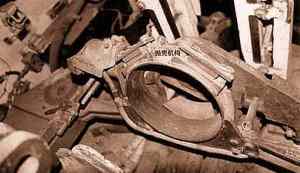 |
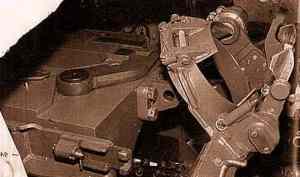 |
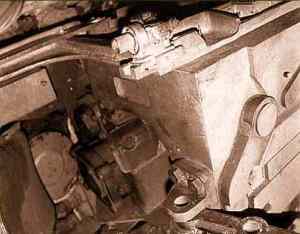 |
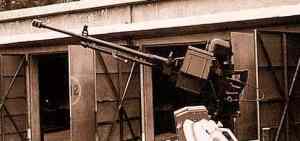 |
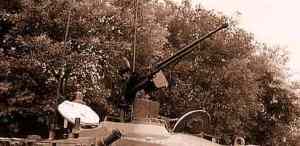 |
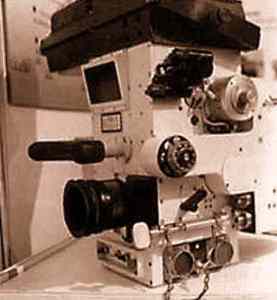 |
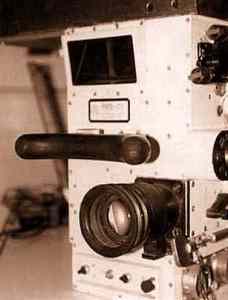 |
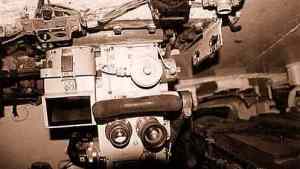 |
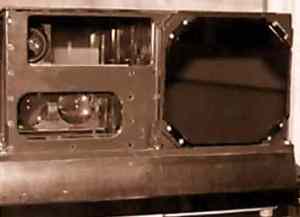 |
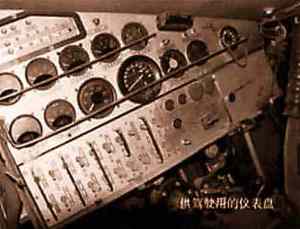 |
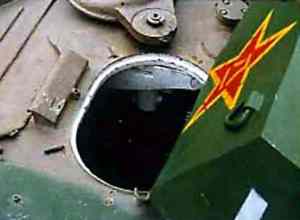 |
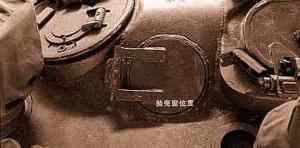 |
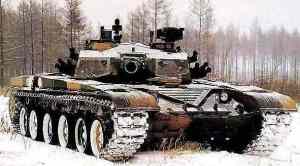 |
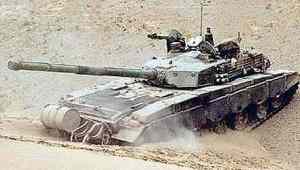 |
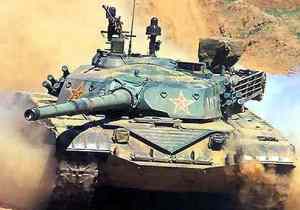 |
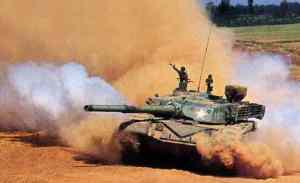 |
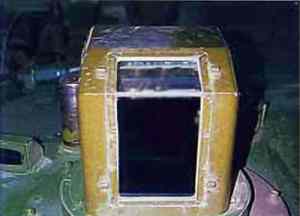 |
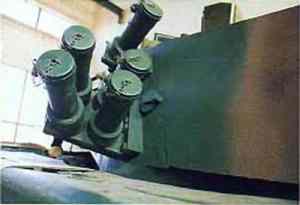 |
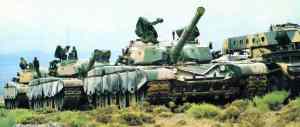 |
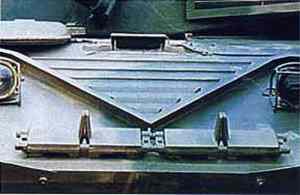 |
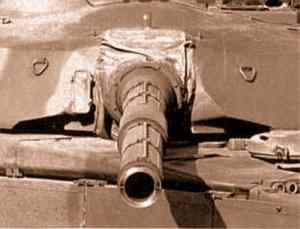 |
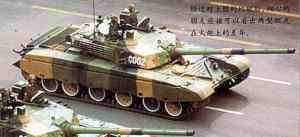 |
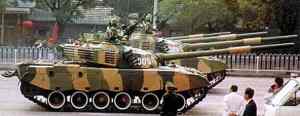 |
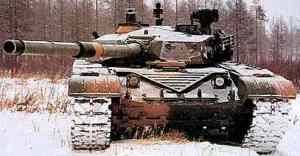 |
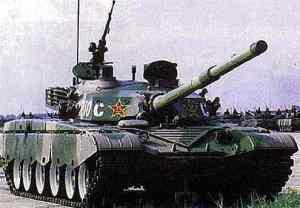 |
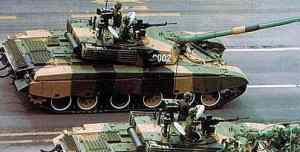 |
